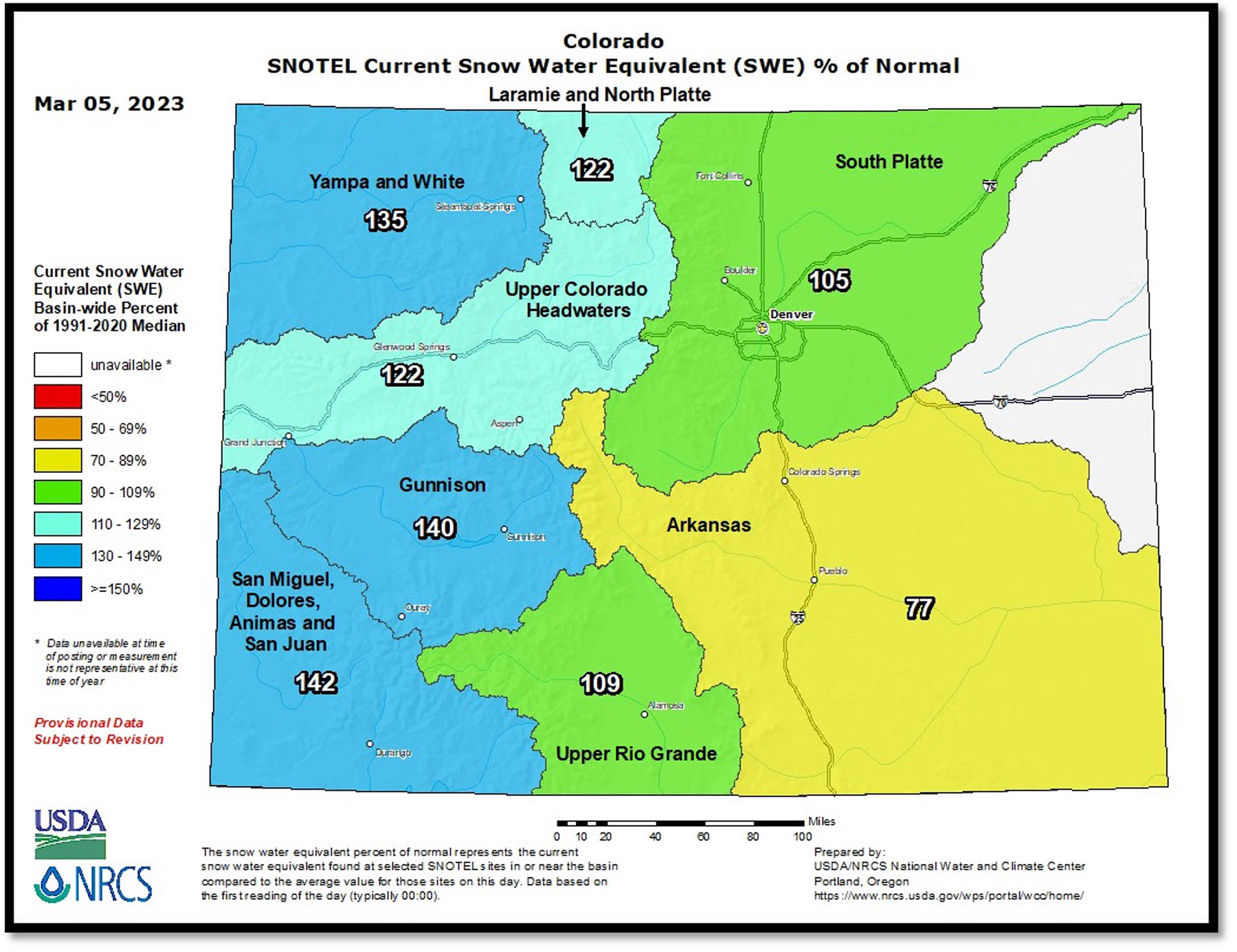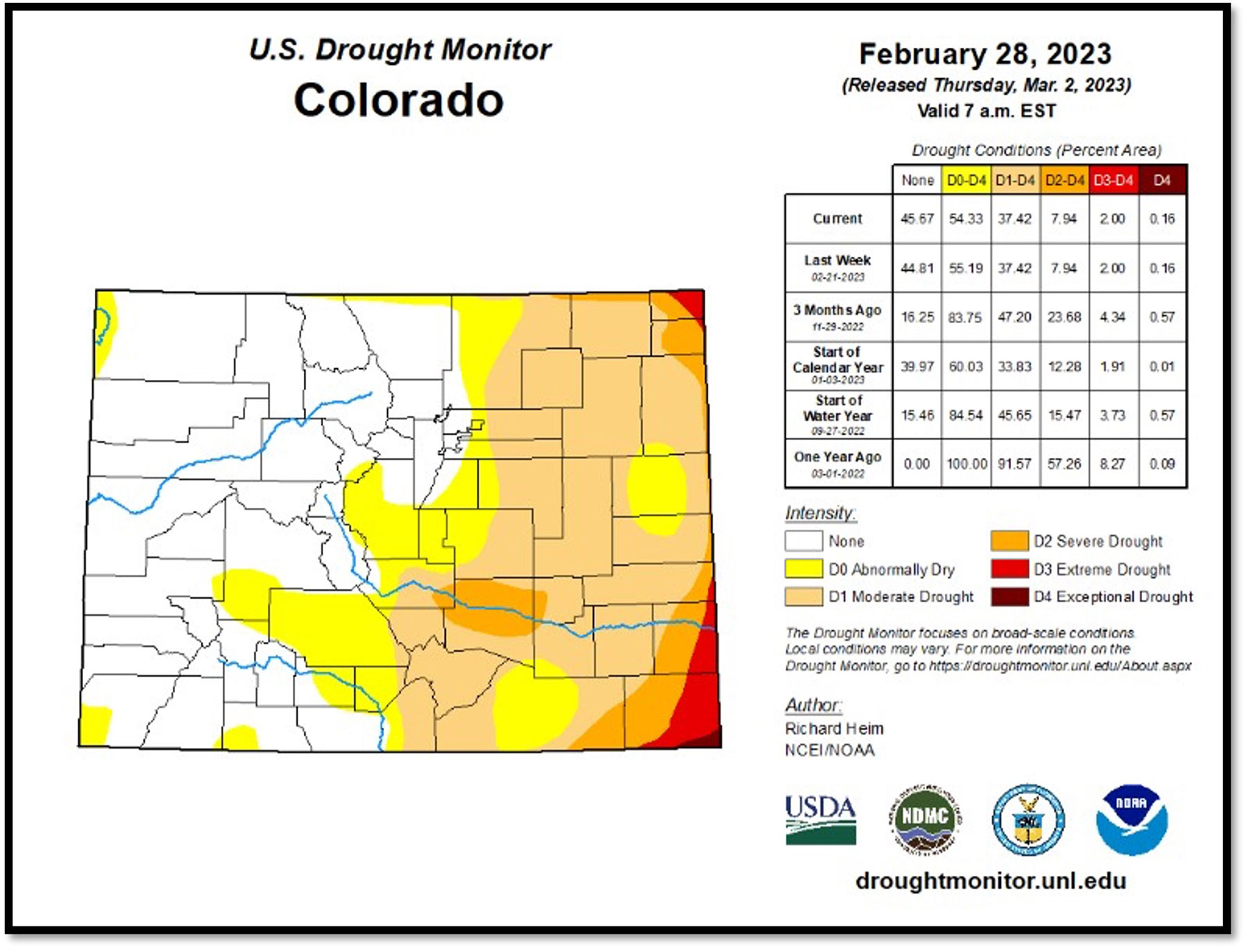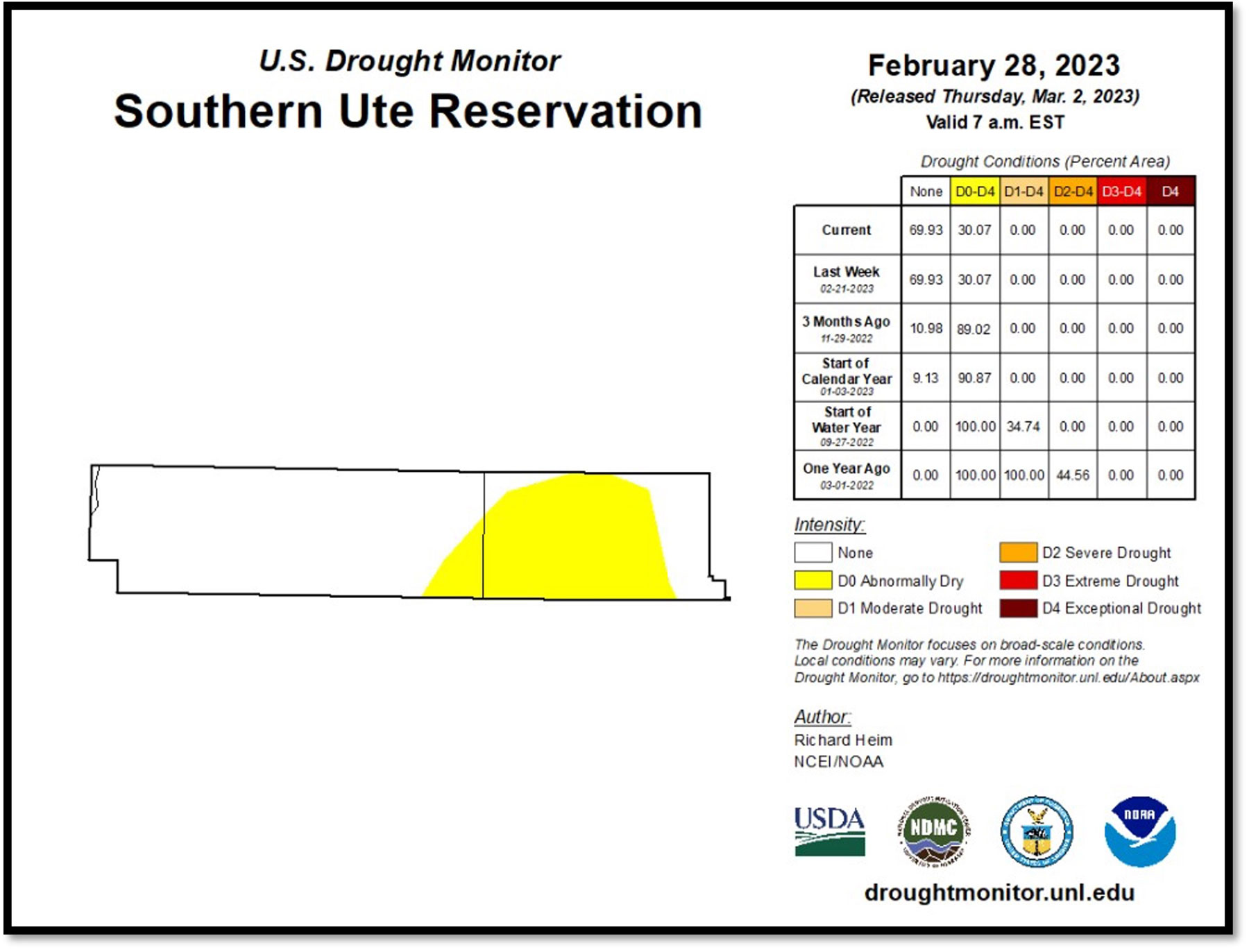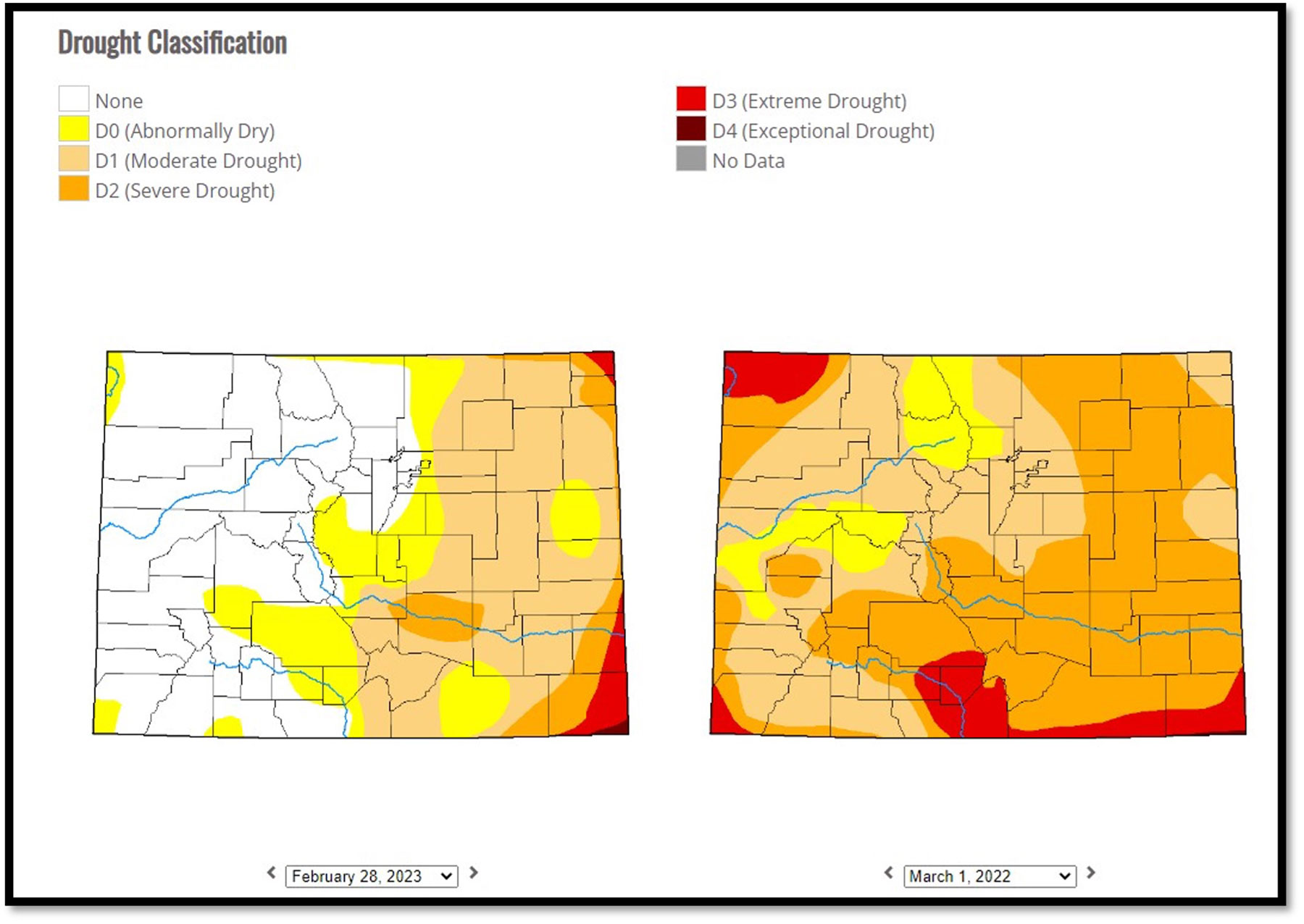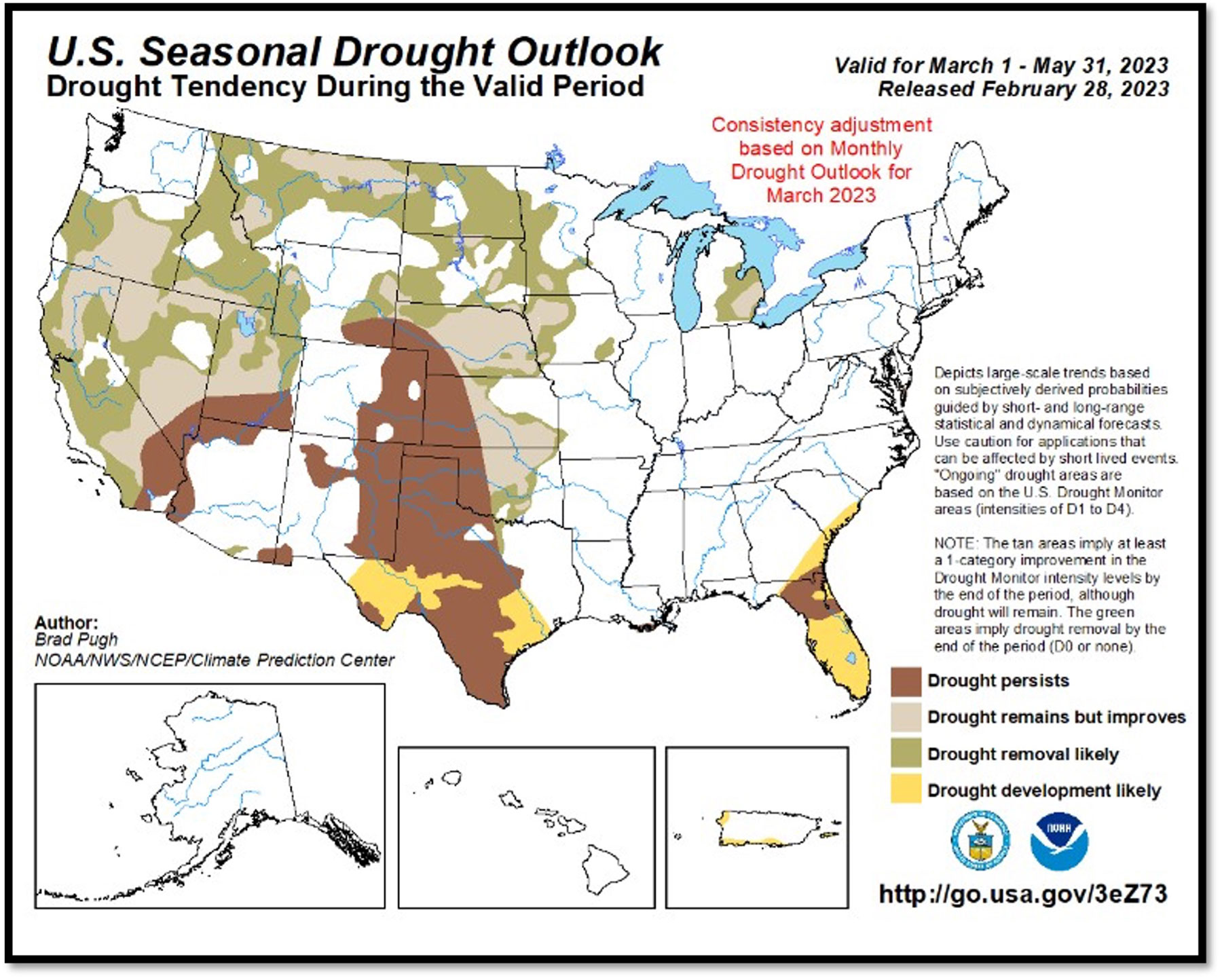Tracking snowpack, drought conditions, and forecasts










Snowpack has been great since the last drought update on Jan. 9, and continues to increase as our region receives more snowstorms. As we are nearing spring and irrigation season, the Southern Ute Water Resources Division (WRD) decided to send out a drought-snowpack report to update everyone on how our area is doing and what this year’s irrigation season could entail. This report will describe the current snowpack, drought conditions, and forecasts.
Snowpack
Snowpack across the western United States, including Colorado, is above average. Colorado’s Western Slope has had above average snowpack for all of 2023, which has been great. Southwest Colorado river basins currently have 142% of Normal Snow Water Equivalent (SWE) which should provide a great runoff season to fill most reservoirs and provide a good irrigation season.
The Ignacio Community Collaborative Rain, Hail, and Snow Network (CoCoRaHS) station has recorded 2.95 inches of liquid precipitation so far this year. That amount is substantial compared to the amount of liquid precipitation on March 6 for the previous three years. The Pine River watershed is currently at 144% of median SWE, which will lead to a great runoff season — filling the Vallecito Reservoir.
In fact, you may have noticed the Pine River has higher flows right now and that’s due to Vallecito releasing water to make room for all the inflows from runoff this coming spring. Vallecito is currently 59% full and needs 48,000 acre-feet (AF) of water to fill. However, projections show there is 182,000 AF of water in snowpack storage above Vallecito, which is why they are releasing now to make room for all that extra water that will melt and come down to the reservoir.
Table 1. Liquid precipitation amounts recorded by Ignacio CoCoRaHS station.
Date Liquid precipitation (inches)
3/6/2023 2.95
3/6/2022 1.17
3/6/2021 1.64
3/6/2020 0.74
The Florida River watershed is currently at 151% of median SWE. This trend is much higher than last year and the 30-year median which is great news. Lemon Reservoir is currently 43% full and needs about 22,000 AF of water to fill. The current storage levels and inflow forecasts suggest Lemon has a 90% chance of filling this year based on 1991-2020 hydrology, so the Florida irrigation season will no doubt be better than the last few years. As runoff season begins this spring and the WRD receives more info, we will notify tribal irrigators and water users about irrigation season forecasts.
For those interested in how other watersheds are trending, the Animas watershed is currently at 116% of median SWE, the La Plata watershed is currently at 122% of median SWE, and the San Juan watershed is currently at 126% of median SWE. Snowpack is good right now and more snow events will maintain our snowpack. The seven-day forecast shows some precipitation for our area over the next week.
Drought
Western Colorado is still doing pretty good in terms of drought. At the time of the last drought update, Jan. 9, Southwest Colorado was still mostly in an “Abnormally Dry” drought condition. Currently, the region is not experiencing any drought conditions thanks to the great snowpack we’ve seen. The Southern Ute Indian Reservation is also not experiencing any drought conditions except for a small area in the eastern part of the reservation.
Colorado and the Southern Ute Indian Reservation’s drought conditions are both doing a lot better than at this time last year. The drought forecast ending March 31, shows Southwest Colorado continuing without drought conditions, which would be a great start to irrigation season.
Forecasts
Although the forecasts haven’t been the most accurate this winter, they still provide some insight into the upcoming spring irrigation season. The March, one-month forecast shows our area having above average precipitation and below average temperatures which has been the trend for 2023 so far. The March-May, three-month forecast shows our area having the opposite: below average precipitation and above average temperatures. Likewise, the April-June, three-month forecast, shows our area also having below average precipitation and above average temperatures. These spring conditions would be less than ideal, but anything can change, so take these forecasts with a grain of salt. More information can be found here: https://wwa.colorado.edu/resources/intermountain-west-climate-dashboard.
Having above average precipitation and below average temperatures in March will help increase and maintain snowpack which is what we need to prevent another very early runoff like last year. Snowpack is great this season and will lead to a good start to the irrigation season. The reservoirs will be more full than last year, and drought conditions are presently non-existent in our area.
One major caveat to this information is although the western portion of the United States, including our area in Southwest Colorado, has had a wet year so far, and is not currently experiencing any drought conditions, this doesn’t mean we are saved from the megadrought. It will take several winters like this one to bounce back from the megadrought. However, we must start somewhere, and this winter has been a nice break from major drought, low snowpack, and poor runoff.
The Southern Ute Water Resources Division will keep track of snowpack, drought conditions, and forecasts and update the Task Force when major changes occur. Things can change, but for the time being, neither the WRD nor the Task Force need to take further actions regarding drought. If you’d like more information on snowpack, drought, and forecasting resources, feel free to reach out to George Gavrielides, Water Resources Specialist for the Southern Ute Indian Tribe, at 970-563-2932.


